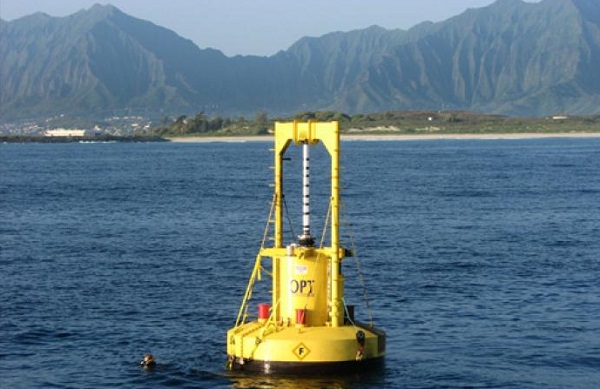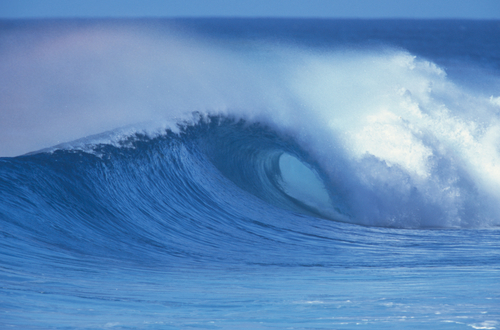The U.S. Navy’s wide-ranging quest for renewable energy has taken an eminently logical turn in Hawaii, where the service is looking to the water for power.
Plans for a wave-energy test center are moving into high gear after Navy officials met with a diverse group of ocean energy developers last month. As part of a two-day conference at Marine Corps Base Hawaii, attendees visited the Kaneohe Bay site, where research into wave power began in the early 2000s, and where Ocean Power Technologies in 2009 hooked a wave energy buoy into the grid. That was the first ever grid connection of a wave energy device in the United States.

A 2003 environmental assessment by the Navy [PDF] found that wave power projects there would have no significant impacts. The Navy hopes to add more buoys and supply the Marine base with wave power by 2014.
At the conference, some 40 developers presented cutting-edge technology to the Navy in hopes of becoming one of three soon-to-be-selected private companies to begin testing their devices and harnessing the ocean’s energy at Kaneohe Bay, with funding from the U.S. Department of Energy. Navy engineers and private sector scientists discussed wave energy technology initiatives and implementation, offshore wind power, ocean thermal energy conversion, sea water air conditioning and ocean compressed air energy storage.
“The Navy is committed to reducing our dependence on fossil fuels,” said Pete Lynch, vice commander captain of Naval Facilities Engineering Command (Pacific Division), adding that “the ocean is an untapped resource and possible source of renewable energy.” After reviewing proposals from several private energy companies, the selection process begins. Designs of new moorings and power cables are anticipated by the end of the year. Navy engineers are already meeting with local residents and stakeholders about an environmental assessment on the Kaneohe Bay site.
Environmental concerns regarding ocean energy include possible interference with aquatic animal movement and migration as well as possible injury or mortality to sea creatures, however, further investigation is required. Future leaders from the Naval Postgraduate School receive training in energy efficiency and renewable energy, putting them on course for a sustainable future where green technology is a priority. The Navy expects to produce half its power from renewable sources by 2020.

The U.S. military is the world’s largest consumer of oil, but President Obama acknowledged the Department of Defense’s commitment to clean energy in his State of the Union Address this January, singling out the Navy’s plan to purchase “enough capacity to power a quarter of a million homes a year,” approximately 1 gigawatt (one billion watts). Part of that purchase includes 270 megawatts of geothermal power by the end of 2012, according to Tom Hicks, Deputy Assistant Secretary to the Navy (Energy).
The Navy has researched other alternative energy areas such as fuel-cell vehicles, solar power, and biofuels for ships. Some members of Congress have criticized the Navy’s investments in green technology, but supporters maintain that the future of our nation’s security relies heavily upon reduced dependence on foreign sources of energy, which are often unstable regions involved in international conflicts.